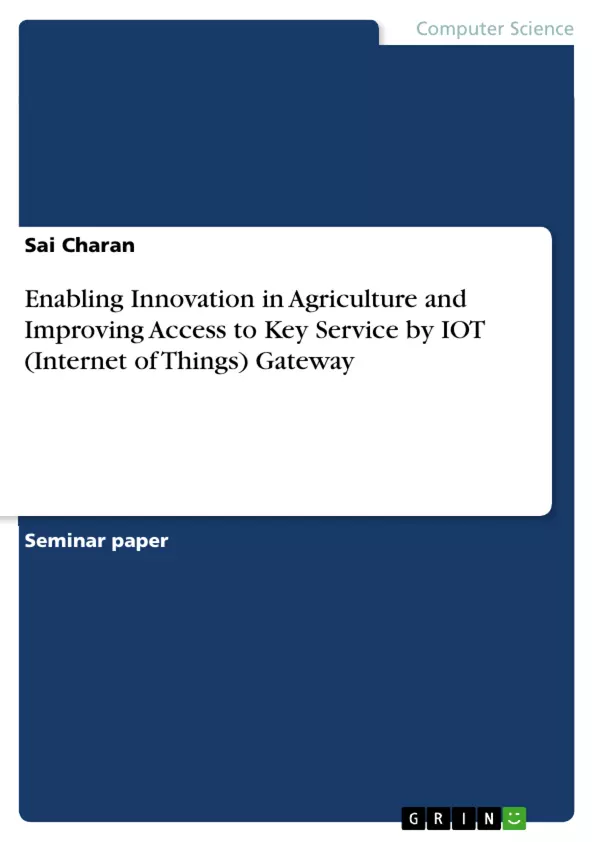IoT is a revolutionary technology that shows the future of computing and communications and using large scale IoT platforms it is easy to process various number of sensor data. IoT refers to network of objects with wireless technology. IoT platforms are used to process ,analyse the data and produce smart solutions in a short time. This article is to put transmission between wireless sensors and internet for smart agriculture. GPS, RFID,3G, GPRS, geomactics , cloud computing are included with the internet of things are to be focused in order to develop Smart Agriculture.
Real time detection. By scripting on RaspberryPi, the monitoring system can get the features like humidity, moisture, light , temperature where the sensors like humidity sensor (RHT03) ,soil moisture sensors ,temperature sensors and PIR sensors can be used to detect the changes in moisture, temperature and light conditions in and around the farm and results are obtained and plotted in graphical form based sheets.
Big data analyses are performed to maintain best crop, good production and safe farming.
Inhaltsverzeichnis (Table of Contents)
- Introduction
- RaspberryPi interface
- Related work
- Smart Cities
- Smart Farming
- Agri-IoT Ecosystem Layered Architecture
- Structure of Wireless monitoring framework for smart farming
- Smart Farming Layered Architecture
- Smart Farming Architecture Model A
- Smart Farming Architecture Model B
- Mosquitto MQTT Broker
- IoT security
- IoT communication Models
- Zigbee Coordinator
- Wireless range of sensor devices
- Smart farming generic life cycle
- Decision modules adaptive software architecture
- Smart farming challenges
- ROLE OF THE INTERNET OF THINGS IN THE AGRICULTURAL
- Smart farming needs
- Schematic of the circuit
- Conclusion
Zielsetzung und Themenschwerpunkte (Objectives and Key Themes)
This article aims to explore the application of Internet of Things (IoT) technology in the context of smart agriculture. The goal is to demonstrate how IoT can be used to improve efficiency, productivity, and sustainability in agricultural practices.
- Utilizing IoT for data acquisition and analysis in agriculture
- Developing a wireless monitoring framework for smart farming
- Exploring the role of Raspberry Pi in smart agriculture applications
- Addressing challenges and opportunities related to implementing IoT in agriculture
- Analyzing the potential benefits and limitations of IoT-enabled smart farming solutions
Zusammenfassung der Kapitel (Chapter Summaries)
- Introduction: This chapter introduces the concept of smart agriculture and its potential to enhance agricultural practices. It highlights the role of IoT in connecting sensors, devices, and data for improved efficiency and decision-making.
- Raspberry Pi interface: This chapter focuses on the Raspberry Pi as a low-cost computing platform for developing smart agriculture solutions. It describes how Raspberry Pi can be used to collect data from various sensors and process it for real-time monitoring and analysis.
- Related work: This chapter provides an overview of existing research and initiatives related to smart agriculture and IoT. It examines how smart cities and other areas are utilizing IoT technologies and their relevance to the agricultural domain.
- Structure of Wireless monitoring framework for smart farming: This chapter presents a layered architecture for a wireless monitoring framework in smart agriculture. It details the different layers and components of the framework, including data acquisition, processing, and analysis.
Schlüsselwörter (Keywords)
The main focus of this article is on the integration of Internet of Things (IoT) technologies into modern agriculture, with key themes including smart farming, wireless sensor networks, data analytics, and precision agriculture. It explores the use of Raspberry Pi, MQTT broker, and ZigBee coordinators, highlighting the potential for enhanced efficiency, productivity, and resource management in agricultural practices.
- Quote paper
- Sai Charan (Author), 2017, Enabling Innovation in Agriculture and Improving Access to Key Service by IOT (Internet of Things) Gateway, Munich, GRIN Verlag, https://www.grin.com/document/385502



